Adrian Collins's Blog, page 93
June 15, 2023
REVIEW: The Prophet of Edan by Philip Chase
Reading The Prophet of Edan, the second book in Philip Chase’s Edan Trilogy, is a transcendent experience, epic in scope yet deeply personal.
The Prophet of Edan chronicles the War of the Way, a holy war launched by Bledla, Supreme Priest of the Kingdom of Torrlond, the self-declared Prophet of Edan who commands an army of enslaved dragons in his quest to conquer the land of Eormenlond. Bledla argues that his control over the dragons is “irrefutable proof of Edan’s blessing” in support of his blood-soaked war.
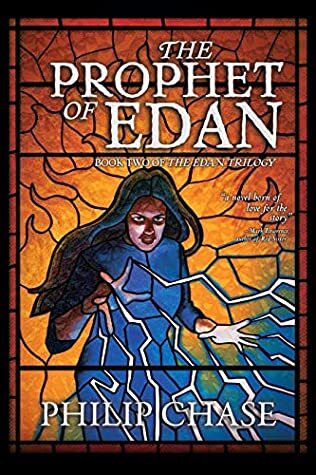 While The Prophet of Edan is full of exhilarating dragon-fueled battle sequences, this outward action is balanced by a delicate introspection that showcases some of Philip Chase’s most lyrical prose to date, especially as he recounts lead protagonist Dayraven’s journey of self-discovery.
While The Prophet of Edan is full of exhilarating dragon-fueled battle sequences, this outward action is balanced by a delicate introspection that showcases some of Philip Chase’s most lyrical prose to date, especially as he recounts lead protagonist Dayraven’s journey of self-discovery.
Throughout literary history, ravens symbolize wisdom, magic, and understanding, often acting as psychopomps that connect the physical world with the spiritual realm. In Greek mythology, the raven is also a symbol of Apollo, the god of prophecy, providing a direct connection with The Prophet of Edan. Philip Chase is also heavily influenced by Welsh mythology, where ravens represent bravery during battle. Even today, a flock of ravens guards the Tower of London; a superstition dating back to the English Civil War states that, if the ravens are removed, the entire Kingdom of England will fall.
Dayraven’s path toward enlightenment is, for me, the highlight of The Prophet of Edan. Dayraven is torn between earthly pleasures and embracing his call toward something greater, afraid of losing his attachments while also recognizing the need to detach himself for the benefit of those he loves.
There is a strong Buddhist element to Dayraven’s training, which evokes the lyrical reflections of Siddhartha, Hermann Hesse’s masterpiece of self-discovery. The mystical introspection of The Prophet of Edan also reminds me of the journey of enlightenment in Haruki Murakami’s The Wind-up Bird Chronicle, where the main protagonist seeks inner truth in a world full of cruelty.
Dayraven’s internal struggles pit his own identity versus that of the elf-shard, which became embedded within him in The Way of Edan. Dayraven often feels like the elven will is somehow taunting or controlling him. As he strives for deeper meaning, Dayraven oscillates between fighting this magic inside him and accepting its presence.
Dayraven’s journey of self-discovery is set against the seemingly unstoppable Torrlond war machine, where Bledla exploits Torrlonders’ faith as a rationale for military and political conquest. Bledla’s outward manifestation of magic is juxtaposed with Dayraven’s internal quest toward finding the magic within himself. The conflict between Bledla and Dayraven also highlights the contrast between organized religion and a more personal spirituality, especially when the former becomes a perversion of the faith that it supposedly professes. In many ways, The Prophet of Edan also serves as a commentary on the inadequacy of any religion to decipher the full mysteries of the universe.
Moving beyond this spiritual commentary, another highlight of The Prophet of Edan is the relationship between Dayraven and Sequara, a young sorceress and future queen who is wise beyond her years. Sequara forms a special bond with Dayraven and helps him to find his own inner truth. I was truly touched by the development of their relationship throughout the book, which left me in tears by the end.
Philip Chase also excels in worldbuilding, having created an expansive fantasy world with Eormenlond, which is fully explored in The Prophet of Edan. The Prophet of Edan seems to have a greater influence from George R.R. Martin compared to The Way of Edan. In true style of A Game of Thrones, Philip Chase does an excellent job introducing us to the various cultures and politics across a sprawling world.
The pacing of The Prophet of Edan is excellent. I was a bit afraid that the plot would wrap up too cleanly at the end of this second volume, leaving little to be explored in the third book of the trilogy. Fortunately, my concern turned out to be misplaced, and Philip Chase left me eager to continue with Return to Edan, the final volume of the trilogy which will be published this fall.
The Prophet of Edan is an instant classic, the perfect follow-up to Philip Chase’s masterful debut, The Way of Edan, and a glorious lamentation that somehow transcends its own epic scope.
5/5
Read The Prophet of Edan by Philip ChaseThe post REVIEW: The Prophet of Edan by Philip Chase appeared first on Grimdark Magazine.
June 14, 2023
REVIEW: Dawnshard by Brandon Sanderson
Dawnshard is an excellent Stormlight Archive novella by Brandon Sanderson meant to be read between the third (Oathbringer) and fourth (Rhythm of War) volumes of the series. There are several important revelations here concerning the Cosmere as a whole, as well as a lot of great character development. Hence, I would consider Dawnshard as required reading for Stormlight Archive fans.
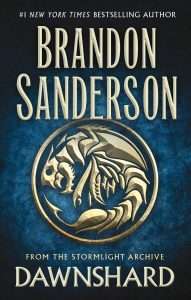 Dawnshard centers on Rysn, one of the side characters from the Stormlight Archive. Rysn shines in her role as lead protagonist of this novella. She is a paraplegic, having lost the use of her legs during an early interlude chapter in the Stormlight Archive. Brandon Sanderson obviously did a lot of careful research regarding life with physical disabilities, including the social aspects of how people with disabilities are treated by others. Rysn is such an amazing character to present these issues and show that, even without the use of her legs, she can still accomplish anything she wants:
Dawnshard centers on Rysn, one of the side characters from the Stormlight Archive. Rysn shines in her role as lead protagonist of this novella. She is a paraplegic, having lost the use of her legs during an early interlude chapter in the Stormlight Archive. Brandon Sanderson obviously did a lot of careful research regarding life with physical disabilities, including the social aspects of how people with disabilities are treated by others. Rysn is such an amazing character to present these issues and show that, even without the use of her legs, she can still accomplish anything she wants:
“Sometimes you need to accept what you’ve lost, then move forward. Then you can instead realize what you’ve gained.”
The story itself focuses on an expedition that Rysn leads to the legendary city of Akinah. Her pet larkin, Chiri-Chiri, is sick and needs to return to his homeland of Akinah for healing. A larkin is a small dragon-like crustacean with the ability to fly. Chiri-Chiri seems to be growing over time where he might, perhaps, become more of a full-sized dragon in the future. We will need to wait and see.
But the expedition has much broader importance beyond just Rysn’s personal mission of helping Chiri-Chiri. Rysn discovers secrets related to the creation of the Cosmere itself and becomes the recipient of an ancient gift that had been hidden away for thousands of years.
Dawnshard is a superb novella, and I definitely recommend reading this as a key part of the Stormlight Archive. Dawnshard is also, perhaps, the greatest fantasy novella I’ve read in terms of disability representation. I hope we see much more of Rysn in future volumes of the Stormlight Archive.
5/5
Read Dawnshard by Brandon SandersonThe post REVIEW: Dawnshard by Brandon Sanderson appeared first on Grimdark Magazine.
June 13, 2023
REVIEW: Morgan Is My Name by Sophie Keetch
Sophie Keetch’s debut, Morgan Is My Name, tells the story of one of the great Grimdark heroines of myth, Morgan le Fay. Both lover and sister to Arthur, the Once and Future King, she has taken on the role of temptress, of vile betrayer, of an intelligent sorceress who refused to stay within the confines expected of her in the corpus of legends. This is the first novel in a planned trilogy, so much of the story in Morgan Is My Name is exposition, is building up to a darkness only hinted at here.
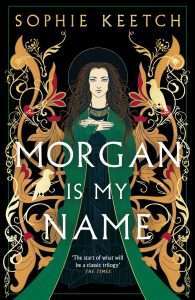 Morgan Is My Name tells the eponymous Morgan’s story from childhood to when she hits her personal breaking point and turns into someone far closer to the Morgan we know from myth and legend. It focuses on her childhood, her marriage to Urien and the diverse relationships she builds, relies on and has to navigate as a woman of high social standing in a medieval society. A sense of powerlessness permeates the book, a immense and growing frustration with her place in her household and society at large. It is certainly not an easy life Morgan leads, though a privileged one.
Morgan Is My Name tells the eponymous Morgan’s story from childhood to when she hits her personal breaking point and turns into someone far closer to the Morgan we know from myth and legend. It focuses on her childhood, her marriage to Urien and the diverse relationships she builds, relies on and has to navigate as a woman of high social standing in a medieval society. A sense of powerlessness permeates the book, a immense and growing frustration with her place in her household and society at large. It is certainly not an easy life Morgan leads, though a privileged one.
And this is where the book unfortunately falls flat for the Grimdark reader. While I found it to be a perfectly fine read, enjoyable and interesting, the way Morgan was portrayed took away a lot of the complexity of her character from myth. By giving her this retelling, by giving her an origin story that established her as a woman wronged by men to justify who she later becomes, she doesn’t come across as a character with depth and nuance of her own. I wished for her to be fiercer earlier, to show glimpses of morally grey decision making from childhood on, to have a character arc consistent in itself.
In terms of genre, Morgan Is My Name reads far more like a literary, commercial feminist retelling than a genre novel. Its supernatural elements are sparse and relegated to background dressing. I was hoping for more Merlin, for more prophecy, perhaps even Avalon. The legends have such amazing dark content that this version pushed aside in order to focus on one woman – and her as a woman.
Now, given that this is the first in a trilogy, it may well be that the second and third books will expand on the elements only shown briefly in the first book. I am intrigued enough to pick up the next volume when it releases, but I wouldn’t recommend this for the Grimdark audience.
Read Morgan Is My Name by Sophie KeetchThe post appeared first on Grimdark Magazine.
June 12, 2023
REVIEW: Fourth Wing by Rebecca Yarros
In the wise words of the late Sir Terry Pratchett:
“Susan hated Literature. She’d much prefer to read a good book.” (Soul Music, 1999)
Such a statement perfectly sums up my feelings regarding seasoned contemporary romance author Rebecca Yarros’ first foray into the fantasy world. Fourth Wing is a rip-roaring, breathlessly exciting war school fantasy featuring high stakes, a tough as nails heroine, a brooding love interest, epic power-up moments, and wonderfully sarcastic dragons. High literature it is not, but it’s still the best book I’ve read all year.
 Violet Sorrengail was supposed to join the Scribe Quadrant. Instead, her mother, General Sorrengail of the Navarre army, forces her to join the Riders Quadrant. With infinitely more candidates than there are dragons to ride, Violet needs to keep her wits about her. As the competition intensifies, and the selection process becomes increasingly more brutal, only one thing is certain: in the world of Basgioth War College, you either graduate… or die.
Violet Sorrengail was supposed to join the Scribe Quadrant. Instead, her mother, General Sorrengail of the Navarre army, forces her to join the Riders Quadrant. With infinitely more candidates than there are dragons to ride, Violet needs to keep her wits about her. As the competition intensifies, and the selection process becomes increasingly more brutal, only one thing is certain: in the world of Basgioth War College, you either graduate… or die.
I should mention to Grimdark Magazine readers that Fourth Wing is neither grimdark, nor is it really even dark fantasy. Yes, there’re a lot of people falling to their deaths. Yes, there’re a lot of people getting barbequed by angry dragons. However, there are numerous recognisable romance tropes that bring this book firmly into the ‘romantasy’ category, which isn’t much of a surprise given the author’s background in contemporary romance. Also, despite its adult themes—violence, swearing, gore and explicit sex scenes—Fourth Wing is written in the first-person present tense; a narrative style typically associated with Young Adult. That’s not to say the romance sub-plot is the central focus (it’s not), nor that it reads especially young (it doesn’t), but if you’re looking a palette cleanser amidst your usual grimdark fare, you might want to dive in.
Rebecca Yarros executes the tropes and predictability of Fourth Wing with all the skill and prowess only a seasoned writer can bring. Entirely comfortable with her craft and fully aware of her audience’s expectations, she consistently delivers on tried and tested formulas whilst still managing to surprise. You may think you know exactly what’s going to happen next (and happen it does), but there’ll always be a sting in the tail. Yarros’ writing is informal, pacey and completely addictive, making pages fly by faster than a soaring dragon. For some, this informality may be a barrier to their enjoyment, but I personally lost count of the number of times I wished to cry out just from the sheer exhilaration of what I was reading. The entire plot was a melodramatic rollercoaster and I never wanted to get off.
By far the highlight of Fourth Wing for me is its heroine, Violet Sorrengail. Violet, like Rebecca Yarros herself, has Ehlers-Danlos syndrome: a degenerative condition which affects connective tissues in the human body. This results in hypermobility, joint pain, brittle bones and prematurely greying hair. Underestimated by everyone she encounters, including her own mother and supposed best friend, Violet proves to her naysayers time and time again that she’s not to be messed with—that she has what it takes to survive. Yarros handles the additional difficulties Violet faces due to her condition with effortless skill and beautiful empathy. Strong, sassy and seriously smart, her heroine’s successes feel justified, plausible and, most importantly, earned:
“I’m used to functioning in pain, asshole. Are you?”
Speaking as someone who also lives with daily chronic pain, this made for a joyful and cathartic read.
If you’re a fan of brutal war games, smart-talking dragons, swooning ‘enemies to lovers’ romances and unstoppably angry women with knives, Fourth Wing is the book for you. Please go pick it up immediately—I promise you won’t be disappointed.
Read Fourth Wing by Rebecca YarrosThe post REVIEW: Fourth Wing by Rebecca Yarros appeared first on Grimdark Magazine.
June 11, 2023
REVIEW: A Prelude to Ashes by Thiago Abdalla
Thiago Abdalla’s prequel novella, A Prelude to Ashes, takes place one hundred years prior to the events of A Touch of Light, Book One of The Ashes of Avarin series.
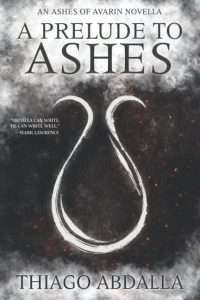 One hundred years? It’s actually not that long for the people of the Domain, who live extraordinarily long lives thanks, presumably, to the blessings of the Seraph, the goddess of life who keeps death at bay.
One hundred years? It’s actually not that long for the people of the Domain, who live extraordinarily long lives thanks, presumably, to the blessings of the Seraph, the goddess of life who keeps death at bay.
A Prelude to Ashes is an excellent introduction to the world of Avarin. Although you could read A Prelude to Ashes and A Touch of Light in either order, I’d recommend reading A Prelude to Ashes first.
There are a couple of reasons for this suggestion. First, the prequel novella provides helpful worldbuilding-related information to lay the context for the much longer A Touch of Light. Second, given its narrower scope and smaller cast of characters, A Prelude to Ashes is more accessible for new readers. Hence, I’d advise new readers to tackle A Prelude to Ashes first and then move on to A Touch of Light.
Although there is important foundational worldbuilding in A Prelude to Ashes, the real focus is on the relationships among the characters. I especially loved the bond between Prince Adrian and his older brother, Jovu, as well as Adrian’s forbidden relationship with his partner, Myrra, a princess from the rival nation of Dakhra. Adrian and Myrra are trying to unite their two countries within the common land of the Domain, but will their fathers be able to overcome their longstanding differences?
The plot of A Prelude to Ashes is full of action, just as in A Touch of Light and its sequel, A Shade of Madness. Abdalla strikes just the right balance between character development and heart-pounding action, with plenty of well-written scenes for grimdark readers to enjoy:
“The blood oozed thick and dark, red so deep it shone black in the night. Maybe not even red, now that she inspected him closer. Nasha took another few tentative steps, one hand close to her obsidian hunter’s knife, breath held in her chest.”
The ending of A Prelude to Ashes is especially well done, leaving me thirsty to spend more time in the land of Avarin.
Overall, A Prelude to Ashes is a very welcome addition to The Ashes of Avarin series and the perfect place to start for readers new to Thiago Abdalla’s epic fantasy world.
4.5/5
Read A Prelude to Ashes by Thiago AbdallaThe post REVIEW: A Prelude to Ashes by Thiago Abdalla appeared first on Grimdark Magazine.
June 10, 2023
An interview with Sebastien de Castell
Fantasy fans will be well aware of Sebastien de Castell by now – and if you aren’t, then you are truly missing out. His debut series, The Greatcoats, has been described as “Three Musketeers meets high fantasy”, and it won him a legion of fans for its effortless combination of heroism, humour and tragedy.
De Castell built on his success with the Spellslinger series, a set of books that lean more YA but also thrilled traditional fantasy aficionados. Now, with a popular and successful body of work behind him, de Castell is debuting a new series with book one titled the Malevolent Seven. This time, the not-so-good guys are our heroes and it promises to be an epic adventure that de Castell’s fans will lap up.
The man himself was kind enough to open up on the new series for Grimdark Magazine…
Hi Sebastien, thanks for taking the time to answer some of our questions! Your Greatcoats series is one of my all-time favourites and I had a lot of fun reading The Malevolent Seven.
 In the Greatcoats, Falcio Val Mond is almost a paragon of justice and good values. In the Malevolent Seven, Cade Ombra is pretty much as far away from that as you can get. What made you want to write from the perspective of the ‘villains’ or anti-heroes this time?
In the Greatcoats, Falcio Val Mond is almost a paragon of justice and good values. In the Malevolent Seven, Cade Ombra is pretty much as far away from that as you can get. What made you want to write from the perspective of the ‘villains’ or anti-heroes this time?
It’s natural to draw distinctions between Cade as the cynical mercenary mage and Falcio the valorous swashbuckler. Cade focuses only on the necessities of the moment and hanging onto what’s left of his sense of decency while Falcio is unwavering in his dogged determination to live up to his ideals. And yet, for me, the two are almost like twin brothers separated not by circumstances or events, but by the presence or absence of a single person: Aline.
Without giving any spoilers here, when you consider Falcio and Cade’s backstories, both share a youthful need to live up to a sort of heroic ideal. Both also experience not only loss but far too many events that seem to disprove their idealistic view of the world. Cade becomes a mercenary mage because he sees no other alternative in a world where no one really believes in his ideals. Falcio, however, has the memory of his wife, Aline. She wasn’t just someone he lost to the cruelties rampant in his society, but the person who embodied the ideals he holds dear.
The Malevolent Seven explores the supposed divide between “good guys” and “bad guys” in a number of ways, and in the end, comes to argue that what makes us good or bad people is less about how our lives unfold and more about who we meet along the way. That’s why, despite all the differences between the Greatcoats and the Malevolent Seven, friendship – even between the most imperfect people – proves to be the most powerful magic spell humanity has ever devised for giving each of us a shot at redemption.
This book is pretty dark, with a lot of graphic deaths and scenes. Did you set out with the intention of making something grimdark fans would love?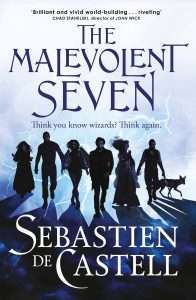
No, I’ve never really been a Grimdark author. On the other hand, darkness in fantasy is hardly the sole province of Grimdark. I remember when Traitor’s Blade came out (and there are loads of dark and sometimes graphic scenes in the Greatcoats series), a few reviewers starting referring to it as “Charmdark”. I like that idea, because the essence of swashbuckling is facing strife and impossible odds with a smile on your face. The Grimdark fans who enjoy the Greatcoats tend to be ones who appreciate both grittiness and the notion that valour and compassion aren’t necessarily inherently flawed ideals no matter how dark the world gets. So, for me, despite the antiheroic side to Malevolent Seven, that swashbuckling vibe still runs through the book.
What’s your process for writing some of the darker and heavier scenes? Do you have to go and play with puppies afterwards or is it quite easy for you to disconnect?
I’m never chasing dark or graphic scenes, but rather dramatic ones. As a writer, I’m a servant of drama first and foremost. I’m looking for moments that spark the strongest emotions in me. Some will be light and fun while others, by necessity, will be dark and heavy. But because I’m searching for that sense of underlying drama, I’m often oblivious to how dark the writing can become. It’s only later where I’ll realize I’ve dug myself into a very dark place. From there, I have to decide whether that dark place is one where I genuinely want to bring the audience, or whether the “shock and awe” is actually going to undermine the emotional drama.
But yeah, I have two professional writing cats who are expert at deciding when I’m getting too near the edge and will come demand cuddles (well, food, mostly – I think the cuddles are just to humour me) to bring me back from the brink.
There’s a lot of angels and demons in this book, as well as religious symbolism. What are some of the inspirations for your world? Are there any particular historical sources that you found interesting?
I’ve been asking myself that same question lately because I’m really not a religious person. I’m happy to be friends with religious people of all kinds, but it’s not something that occupies my own sense of spirituality. What prompted the ideas behind the Auroral realm with its Lords Celistine and various Angelics set against the Infernals with their Lords Devilish, demoniacs, diabolics and profanes, was far more to do with workings of our own world in the twenty-first century.
Lately, we’ve witnessed relatively small groups of varying political and social perspectives waging war not so much on each other as on those in the middle. Everything’s become a holy crusade and your true enemy isn’t the person who embodies everything you despise but the person who fails to embody everything you believe. The various scenes of rollicking adventure and irreverent humour of The Malevolent Seven take place against a backdrop where the Infernals and the Aurorals have spent thousands of years trying to recruit humanity to their side. That’s why I intentionally kept either of them from being either straightforwardly good or evil, because for all their differences, the Infernals and Aurorals are united in trying to force everyone else to one side or the other of the line they’ve chosen to draw. They want the war so badly they crave the thrill of bloodshed even more than the prospect of victory. That resonated with me strongly.
One of my favourite books of all time is Good Omens by Neil Gaiman and the late Terry Pratchett because, in addition to being wonderfully imaginative and incredibly funny, it’s also a story about how the world’s redemption lies not in our adherence to one side or another, but in the silly, awkward, sometimes even pathetic foibles of our own shared humanity. That’s a very antiquated, humanist, and unconscionably liberal perspective. It’s also the belief that keeps me sane.
Despite the bleakness of the world, you inject a lot of humour throughout. With Cade constantly talking to the reader, some people have compared The Malevolent Seven to things like Deadpool, while the humour reminds me a bit of something like Kings of the Wyld. Which books, comics or movies inspired you and made you want to write something with horror and humour in tandem?
I’ve never seen darkness and humour as incompatible, nor do I tend to use humour for the “joke factor” since I’m not a comedian by any stretch. One of the most remarkable things about humour is that it’s a language that we all speak. When we’re bantering with someone else, we’re using a particular language to say things that we wouldn’t otherwise know how to say. In The Malevolent Seven, Cade and Corrigan are mercenary wonderists who, despite their friendship, struggle to fully trust one another. Neither of them can say to the other, “Hey, you’re my friend and I love you.” So, instead, they call each other arseholes in the exact way and at the precise moment that, though neither would admit it, enables them to reaffirm their bond. That’s my favourite use of humour: as a language spoken between characters to express sentiments they otherwise couldn’t.
Out of our seven, who is your favourite? Who did you have the most fun writing?
Aradeus was probably the most fun to write. I honestly had no idea who was going to be there when Cade and Corrigan first set out to recruit the rest of their motley band. Then, just as their barge turns that corner on a canal full of the dead, Aradeus Mozen, the worlds most handsome, honourable, swashbuckling rat mage appeared. He was everything Cade had told the reader a wonderist couldn’t be, and all the things Cade could no longer find in himself. Where Cade tries to hide his compassion for someone like Galass, believing that expressing any sort of optimism would be tantamount to hypocrisy, Aradeus manages to be genuinely encouraging and inspiring.
It’s always those sorts of characters who get me excited when I’m writing because they’re as unexpected to me as they are to the reader.
It was quite a spectacular ending to the book, one that promises even crazier adventures for our not-heroes in the future. How many books do you have planned for the series?
I try to write every book as a standalone because otherwise it feels like you’ve just read half a book rather than a complete one. But what makes a book complete for me is the emotional journey, not the broad events taking place in that world. The virtue of those other events is that they create the space for more novels should readers enjoy this one.
Sometimes, when you launch a “four book series” where the emotional payoffs for book one are only going to take place in book four, you end up in the trap that if the first book doesn’t find an audience, you may never get to tell the whole story. As a novelist, I really want to always tell the whole story. In that sense, Malevolent Seven is the whole story.
That said, I already know exactly how the opening scene of book two goes, and I’m getting a powerful hankering to write it . . .
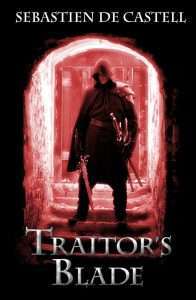 This is your 14th book, how different was the process in writing this one compared to your earlier works?
This is your 14th book, how different was the process in writing this one compared to your earlier works?
My writing process has always been all over the map. The very first draft of Traitor’s Blade was written in a flurry over the course of three days, only to then wait six years before I wrote the version that became my debut novel. Some books, like Play of Shadows which comes out next year, go through a great many drafts because every nuance of character and prose become integral to the story. Others, like Fall of the Argosi, happen over the course of a single, blissful month of writing and then, as if by magic, only need a light revision pass.
Malevolent Seven was somewhere in between, with the first draft written in February of 2020 when all I wanted to do was write a book just for me. I’d just come off finishing the six-book Spellslinger series, which, being YA fantasy, was falling prey with every instalment to an increasingly panicky sense of how terribly dangerous swear words might be to the future of our youth. At the same time, social media was abuzz with discussions of which fantasy sub-genres were tired or overdone and which ones were inherently problematic. I hate all that kind of talk. It makes me get stuck in my head and stifles any kind of creative impulse. So, I set about curing myself by writing what I like to call (sorry for the swearing) a “fuck you novel”.
The purpose of the “fuck you novel” is to write a book just for yourself without any concerns around it finding a publisher. It’s a sort of middle finger to whatever pressures and constraints are closing in around your creativity. Write what you want, say what you want, and let yourself stop caring about whether it satisfies anyone else’s criteria. Alas, my agent asked to see the manuscript when I was done and decided she loved it. I told her to forget it because it didn’t suit the current fantasy landscape. But after she retired and put me onto my current agent, he immediately asked to read it and decided he loved it, too. I still thought it was too much a novel for me rather than for other people, but then it got bought up and now it’s out there in the world.
I think the two lessons I learned from writing Malevolent Seven were these: first, despite how often I feel as if the world of Twitter was secretly engineered for the sole purpose of trying to censor artists, there’s very little that people object to that I actually want to say. So, really, the censorship is mostly inside my own head. And second, when I write a novel meant for no one but me, with no agenda for selling it, that’s when I free myself up to search for something genuinely meaningful. That’s when I write the kind of book other people want to read.
Weird, eh?
The post An interview with Sebastien de Castell appeared first on Grimdark Magazine.
AN INTERVIEW WITH SEBASTIEN DE CASTELL
Fantasy fans will be well aware of Sebastien de Castell by now – and if you aren’t, then you are truly missing out. His debut series, The Greatcoats, has been described as “Three Musketeers meets high fantasy”, and it won him a legion of fans for its effortless combination of heroism, humour and tragedy.
De Castell built on his success with the Spellslinger series, a set of books that lean more YA but also thrilled traditional fantasy aficionados. Now, with a popular and successful body of work behind him, de Castell is debuting a new series with book one titled the Malevolent Seven. This time, the not-so-good guys are our heroes and it promises to be an epic adventure that de Castell’s fans will lap up.
The man himself was kind enough to open up on the new series for Grimdark Magazine…
Hi Sebastien, thanks for taking the time to answer some of our questions! Your Greatcoats series is one of my all-time favourites and I had a lot of fun reading The Malevolent Seven.
 In the Greatcoats, Falcio Val Mond is almost a paragon of justice and good values. In the Malevolent Seven, Cade Ombra is pretty much as far away from that as you can get. What made you want to write from the perspective of the ‘villains’ or anti-heroes this time?
In the Greatcoats, Falcio Val Mond is almost a paragon of justice and good values. In the Malevolent Seven, Cade Ombra is pretty much as far away from that as you can get. What made you want to write from the perspective of the ‘villains’ or anti-heroes this time?
It’s natural to draw distinctions between Cade as the cynical mercenary mage and Falcio the valorous swashbuckler. Cade focuses only on the necessities of the moment and hanging onto what’s left of his sense of decency while Falcio is unwavering in his dogged determination to live up to his ideals. And yet, for me, the two are almost like twin brothers separated not by circumstances or events, but by the presence or absence of a single person: Aline.
Without giving any spoilers here, when you consider Falcio and Cade’s backstories, both share a youthful need to live up to a sort of heroic ideal. Both also experience not only loss but far too many events that seem to disprove their idealistic view of the world. Cade becomes a mercenary mage because he sees no other alternative in a world where no one really believes in his ideals. Falcio, however, has the memory of his wife, Aline. She wasn’t just someone he lost to the cruelties rampant in his society, but the person who embodied the ideals he holds dear.
The Malevolent Seven explores the supposed divide between “good guys” and “bad guys” in a number of ways, and in the end, comes to argue that what makes us good or bad people is less about how our lives unfold and more about who we meet along the way. That’s why, despite all the differences between the Greatcoats and the Malevolent Seven, friendship – even between the most imperfect people – proves to be the most powerful magic spell humanity has ever devised for giving each of us a shot at redemption.
This book is pretty dark, with a lot of graphic deaths and scenes. Did you set out with the intention of making something grimdark fans would love?
No, I’ve never really been a Grimdark author. On the other hand, darkness in fantasy is hardly the sole province of Grimdark. I remember when Traitor’s Blade came out (and there are loads of dark and sometimes graphic scenes in the Greatcoats series), a few reviewers starting referring to it as “Charmdark”. I like that idea, because the essence of swashbuckling is facing strife and impossible odds with a smile on your face. The Grimdark fans who enjoy the Greatcoats tend to be ones who appreciate both grittiness and the notion that valour and compassion aren’t necessarily inherently flawed ideals no matter how dark the world gets. So, for me, despite the antiheroic side to Malevolent Seven, that swashbuckling vibe still runs through the book.
What’s your process for writing some of the darker and heavier scenes? Do you have to go and play with puppies afterwards or is it quite easy for you to disconnect?
I’m never chasing dark or graphic scenes, but rather dramatic ones. As a writer, I’m a servant of drama first and foremost. I’m looking for moments that spark the strongest emotions in me. Some will be light and fun while others, by necessity, will be dark and heavy. But because I’m searching for that sense of underlying drama, I’m often oblivious to how dark the writing can become. It’s only later where I’ll realize I’ve dug myself into a very dark place. From there, I have to decide whether that dark place is one where I genuinely want to bring the audience, or whether the “shock and awe” is actually going to undermine the emotional drama.
But yeah, I have two professional writing cats who are expert at deciding when I’m getting too near the edge and will come demand cuddles (well, food, mostly – I think the cuddles are just to humour me) to bring me back from the brink.
There’s a lot of angels and demons in this book, as well as religious symbolism. What are some of the inspirations for your world? Are there any particular historical sources that you found interesting?
I’ve been asking myself that same question lately because I’m really not a religious person. I’m happy to be friends with religious people of all kinds, but it’s not something that occupies my own sense of spirituality. What prompted the ideas behind the Auroral realm with its Lords Celistine and various Angelics set against the Infernals with their Lords Devilish, demoniacs, diabolics and profanes, was far more to do with workings of our own world in the twenty-first century.
Lately, we’ve witnessed relatively small groups of varying political and social perspectives waging war not so much on each other as on those in the middle. Everything’s become a holy crusade and your true enemy isn’t the person who embodies everything you despise but the person who fails to embody everything you believe. The various scenes of rollicking adventure and irreverent humour of The Malevolent Seven take place against a backdrop where the Infernals and the Aurorals have spent thousands of years trying to recruit humanity to their side. That’s why I intentionally kept either of them from being either straightforwardly good or evil, because for all their differences, the Infernals and Aurorals are united in trying to force everyone else to one side or the other of the line they’ve chosen to draw. They want the war so badly they crave the thrill of bloodshed even more than the prospect of victory. That resonated with me strongly.
One of my favourite books of all time is Good Omens by Neil Gaiman and the late Terry Pratchett because, in addition to being wonderfully imaginative and incredibly funny, it’s also a story about how the world’s redemption lies not in our adherence to one side or another, but in the silly, awkward, sometimes even pathetic foibles of our own shared humanity. That’s a very antiquated, humanist, and unconscionably liberal perspective. It’s also the belief that keeps me sane.
Despite the bleakness of the world, you inject a lot of humour throughout. With Cade constantly talking to the reader, some people have compared The Malevolent Seven to things like Deadpool, while the humour reminds me a bit of something like Kings of the Wyld. Which books, comics or movies inspired you and made you want to write something with horror and humour in tandem?
I’ve never seen darkness and humour as incompatible, nor do I tend to use humour for the “joke factor” since I’m not a comedian by any stretch. One of the most remarkable things about humour is that it’s a language that we all speak. When we’re bantering with someone else, we’re using a particular language to say things that we wouldn’t otherwise know how to say. In The Malevolent Seven, Cade and Corrigan are mercenary wonderists who, despite their friendship, struggle to fully trust one another. Neither of them can say to the other, “Hey, you’re my friend and I love you.” So, instead, they call each other arseholes in the exact way and at the precise moment that, though neither would admit it, enables them to reaffirm their bond. That’s my favourite use of humour: as a language spoken between characters to express sentiments they otherwise couldn’t.
Out of our seven, who is your favourite? Who did you have the most fun writing?
Aradeus was probably the most fun to write. I honestly had no idea who was going to be there when Cade and Corrigan first set out to recruit the rest of their motley band. Then, just as their barge turns that corner on a canal full of the dead, Aradeus Mozen, the worlds most handsome, honourable, swashbuckling rat mage appeared. He was everything Cade had told the reader a wonderist couldn’t be, and all the things Cade could no longer find in himself. Where Cade tries to hide his compassion for someone like Galass, believing that expressing any sort of optimism would be tantamount to hypocrisy, Aradeus manages to be genuinely encouraging and inspiring.
It’s always those sorts of characters who get me excited when I’m writing because they’re as unexpected to me as they are to the reader.
It was quite a spectacular ending to the book, one that promises even crazier adventures for our not-heroes in the future. How many books do you have planned for the series?
I try to write every book as a standalone because otherwise it feels like you’ve just read half a book rather than a complete one. But what makes a book complete for me is the emotional journey, not the broad events taking place in that world. The virtue of those other events is that they create the space for more novels should readers enjoy this one.
Sometimes, when you launch a “four book series” where the emotional payoffs for book one are only going to take place in book four, you end up in the trap that if the first book doesn’t find an audience, you may never get to tell the whole story. As a novelist, I really want to always tell the whole story. In that sense, Malevolent Seven is the whole story.
That said, I already know exactly how the opening scene of book two goes, and I’m getting a powerful hankering to write it . . .
 This is your 14th book, how different was the process in writing this one compared to your earlier works?
This is your 14th book, how different was the process in writing this one compared to your earlier works?
My writing process has always been all over the map. The very first draft of Traitor’s Blade was written in a flurry over the course of three days, only to then wait six years before I wrote the version that became my debut novel. Some books, like Play of Shadows which comes out next year, go through a great many drafts because every nuance of character and prose become integral to the story. Others, like Fall of the Argosi, happen over the course of a single, blissful month of writing and then, as if by magic, only need a light revision pass.
Malevolent Seven was somewhere in between, with the first draft written in February of 2020 when all I wanted to do was write a book just for me. I’d just come off finishing the six-book Spellslinger series, which, being YA fantasy, was falling prey with every instalment to an increasingly panicky sense of how terribly dangerous swear words might be to the future of our youth. At the same time, social media was abuzz with discussions of which fantasy sub-genres were tired or overdone and which ones were inherently problematic. I hate all that kind of talk. It makes me get stuck in my head and stifles any kind of creative impulse. So, I set about curing myself by writing what I like to call (sorry for the swearing) a “fuck you novel”.
The purpose of the “fuck you novel” is to write a book just for yourself without any concerns around it finding a publisher. It’s a sort of middle finger to whatever pressures and constraints are closing in around your creativity. Write what you want, say what you want, and let yourself stop caring about whether it satisfies anyone else’s criteria. Alas, my agent asked to see the manuscript when I was done and decided she loved it. I told her to forget it because it didn’t suit the current fantasy landscape. But after she retired and put me onto my current agent, he immediately asked to read it and decided he loved it, too. I still thought it was too much a novel for me rather than for other people, but then it got bought up and now it’s out there in the world.
I think the two lessons I learned from writing Malevolent Seven were these: first, despite how often I feel as if the world of Twitter was secretly engineered for the sole purpose of trying to censor artists, there’s very little that people object to that I actually want to say. So, really, the censorship is mostly inside my own head. And second, when I write a novel meant for no one but me, with no agenda for selling it, that’s when I free myself up to search for something genuinely meaningful. That’s when I write the kind of book other people want to read.
Weird, eh?
The post AN INTERVIEW WITH SEBASTIEN DE CASTELL appeared first on Grimdark Magazine.
REVIEW: The Combat Codes by Alexander Darwin
The Combat Codes is the debut martial arts science fiction by Alexander Darwin in which war has been replaced by hand-to-hand combat. Originally self-published in 2015, The Combat Codes earned a finalist slot in Mark Lawrence’s sixth Self-Published Fantasy Blog-Off (SPFBO6). Darwin’s entire Combat Code trilogy has since been acquired by Orbit Books, which has released an updated version of The Combat Codes with an additional thirty thousand words to expand the character development and worldbuilding.
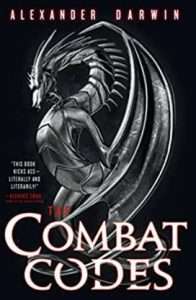 The premise for The Combat Codes is that, in a world decimated by war, countries have vowed never again to use weapons of mass destruction.
The premise for The Combat Codes is that, in a world decimated by war, countries have vowed never again to use weapons of mass destruction.
Instead, they have agreed to solve international conflicts using unarmed combat, where skilled fighters known as Grievar Knights represent the various national interests. Science fiction elements are incorporated throughout the book, mostly as technology meant to enhance fighters’ performance.
The Combat Codes is built around the relationship between Murray Pearson, a retired Knight who suffered a devastating loss that hurt his homeland, and Cego, a diamond-in-the-rough boy who shows much promise fighting in underground arenas. Murray takes Cego under his wing, believing him to be the next great champion.
Alexander Darwin is a master at writing fight scenes. It may seem natural to compare The Combat Codes to Fonda Lee’s martial arts-infused Jade City. Both Alexander Darwin and Fonda Lee are accomplished martial arts masters who write well-choreographed, cinematic fight scenes. However, martial arts are just one component of Jade City, whereas they serve as nearly the sole focus of The Combat Codes.
The plot of The Combat Codes drags for much of the book, until a major plot twist is revealed at around the 80% mark. Until that point, The Combat Codes feels much like reading a sci-fi version of The Karate Kid, with Murray playing Mr. Miyagi as sensei and Cego serving as his pupil, Daniel. A large amount of page time is devoted to the mental and philosophical aspects of martial arts, going beyond physical strength. There is also much discussion on the proper role of technology in training and competition.
The Combat Codes adopts many of the standard training school tropes found in young adult literature: dealing with bullies, testing the limits of friendship, overcoming obstacles, etc. The rather small-scale fights between trainees become quite repetitive. I feel bad in making this criticism, knowing that the author just added thirty thousand words to the book, but the story really could be tightened up to improve pacing and eliminate repetitive scenes. I also found myself hoping for a much grittier read with higher stakes conflicts. Another problem with the story is its rather meager female representation.
The Combat Codes is manna from heaven for martial arts enthusiasts, who will enjoy the breathtakingly realistic fight scenes and philosophical discussions on the importance of martial arts. However, grimdark readers will be left wanting both higher-stakes conflicts and more grit from this debut novel.
3/5
Read The Combat Codes by Alexander DarwinThe post REVIEW: The Combat Codes by Alexander Darwin appeared first on Grimdark Magazine.
June 9, 2023
REVIEW: The Shadow Cabinet by Juno Dawson
The Shadow Cabinet is the follow-up to last year’s Her Majesty’s Royal Coven, taking us back to Juno Dawson’s reimagining of a powerful coven as part of the UK government. For those of you not familiar with the UK government, the Shadow Cabinet is the official opposition, and HMRC stands for His (or Her) Majesty’s Revenue & Customs. The Shadow Cabinet ties on straight to the – rather abrupt and exciting – ending of the first book. Thus, as this is the second book in a series and very much tied up with events of the first, I will not be able to completely avoid spoilers in this review. Please read with caution if you’ve yet to read Her Majesty’s Royal Coven.
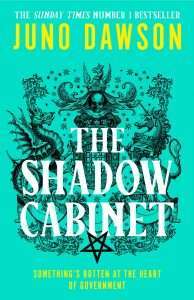 Niamh Kelly is taking over HMRC. Her friends think that all is well – Theo is safe, the old leadership defeated, and Niamh is the best person for the job. But what they don’t know is that they’re not talking to Niamh. Niamh is dead after something has woken up her comatose twin, Ciara – and Ciara has taken over Niamh’s life. And she’ll do whatever it takes to live. And Leonie is trying to hunt down an old adversary, Dabney Hale, following his footsteps across Europe. Meanwhile, Elle learns that her husband’s been cheating on her. Oh, and Luke, Niamh’s boyfriend is a witch hunter. Life in and around HMRC is pretty damn complicated.
Niamh Kelly is taking over HMRC. Her friends think that all is well – Theo is safe, the old leadership defeated, and Niamh is the best person for the job. But what they don’t know is that they’re not talking to Niamh. Niamh is dead after something has woken up her comatose twin, Ciara – and Ciara has taken over Niamh’s life. And she’ll do whatever it takes to live. And Leonie is trying to hunt down an old adversary, Dabney Hale, following his footsteps across Europe. Meanwhile, Elle learns that her husband’s been cheating on her. Oh, and Luke, Niamh’s boyfriend is a witch hunter. Life in and around HMRC is pretty damn complicated.
In this world, HRMC is a coven tied up with the UK government at large. This makes it a bureaucratic institution, and well-founded rage against the current state of affairs in our country is a central theme in the series. The first book was very much a story of trans rage and standing up for those you love, whereas The Shadow Cabinet is the story of toxic masculinity, of female rage, of deciding enough is enough. It is a more mature book, along with its characters, though no less an angry one. Theo, who was at the centre of the first book, takes more of a background role, while Niamh and Ciara, as well as Leonie take on the highlighted roles in this story.
These books are well-written and compelling, interacting with contemporary issues, conversations and language in a way that makes them incredibly relevant to the present day. I’m not certain that they’ll age as well as others as they are really at the pulse of where conversations in politics and society are right now – and hopefully we will be able to move on in a positive direction from here. Though, considering how relevant Margaret Atwood’s The Handmaid’s Tale still is decades later, that may just be wishful thinking on my part.
I found The Shadow Cabinet was another step up from Her Majesty’s Royal Coven and loved my reading experience for the most part. This is especially interesting for Grimdark Magazine readers as it follows a main character who is ostensibly a villain – hiding her identity from her friends and loved ones, and willing to do whatever it takes to achieve her goals. In this story, there are few characters who wouldn’t be considered morally flawed, and more than anything else, the ends always justify the means of getting there. It is a neon-coloured splash of Grimdark colour in a world that we often consider grey-scale – it is not the usual Grimdark fare but contains all the ingredients to appeal and make for a great read!
Read The Shadow Cabinet by Juno DawsonThe post REVIEW: The Shadow Cabinet by Juno Dawson appeared first on Grimdark Magazine.
June 8, 2023
REVIEW: Maeve Fly by CJ Leede
With Maeve Fly, debut novelist CJ Leede wants to introduce readers to a new breed of serial killer.
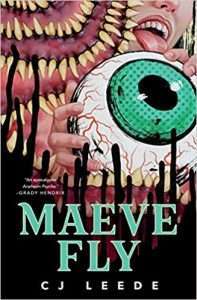 Maeve Fly, the eponymous protagonist (not to be confused with “heroine”), is living her best life. She resides rent-free in a palatial mansion owned by her grandmother Tallulah, a former actress from the Golden Age of Hollywood. She has a job that she loves, working as a costumed princess at the Happiest Place on Earth. She has a best friend, Kate, who is literally the Anna to her Elsa. She amuses herself watching VHS pornography and inciting online hate mobs. Oh, and she indulges in a little murder sometimes, as a treat.
Maeve Fly, the eponymous protagonist (not to be confused with “heroine”), is living her best life. She resides rent-free in a palatial mansion owned by her grandmother Tallulah, a former actress from the Golden Age of Hollywood. She has a job that she loves, working as a costumed princess at the Happiest Place on Earth. She has a best friend, Kate, who is literally the Anna to her Elsa. She amuses herself watching VHS pornography and inciting online hate mobs. Oh, and she indulges in a little murder sometimes, as a treat.
But, as she is intensely aware, cracks are beginning to appear in Maeve’s cushy lifestyle. The grandmother that Maeve idolizes has been comatose for some time, and is receiving in-home hospice care. Her aspiring actress friend, Kate, is one successful audition away from stardom and an inevitable separation from Maeve. And despite their popularity with amusement park visitors, both Maeve and Kate are being subjected to increasing scrutiny by their employer. If all that weren’t enough, an unpredictable new element has arrived on the scene: Kate’s handsome and cocksure brother. A professional hockey player, Gideon both attracts and repels Maeve in equal measure. At any moment her house of cards could collapse, leaving Maeve rootless and adrift. And when Maeve Fly feels threatened, people die.
Written in the first person predatory perspective and peppered with pop culture references, American Psycho is the most obvious point of comparison for Maeve Fly, but there’s a fair amount tonally of Fight Club in here, too. Both Bret Easton Ellis and Chuck Palahniuk are directly referenced within the narrative, name-dropped alongside a number of outre authors, perhaps a self-aware bit of judo intended to disarm critics. Maeve herself has read the books her story is likely to be compared to, and she even glances at a copy of American Psycho before embarking on her final killing spree. But there’s more of interest to be found within this slick serial killer story than a simple gender swap. While habitual murderers are commonly portrayed as aloof, Maeve is anything but detached. She needs the grounding and stability that her grandmother and best friend provide. While she constantly strives to hide her murderous compulsion, at the same time she has a powerful desire to be understood and accepted. Ironically, to be seen. The way that ambivalence is handled is what distinguishes Maeve Fly from other serial killer stories.
With its uncompromising tone and unsettling main character, Maeve Fly is destined to be a divisive book. The violence is graphic, and Leede does not shy away from depictions of sexual assault or animal abuse. Maeve is a forceful and liberated woman, but she’s simultaneously a black hole of need and dependence. She’s a fascinating character, but also an unrepentant monster. There’s no inciting incident from her past that turned Maeve into a killer, she’s a monster with no origin story. The people she kills and mutilates generally aren’t deserving of their fates. They don’t “have it coming.” There’s some sparse and under-cooked commentary about misogyny and gendered violence, but it’s undermined by the fact that Maeve acts more savagely towards women than any of the male characters in the book, and her brutality has a relentlessly sexual component. Maeve is not the subversive feminist icon some prospective readers may be looking for.
Maeve Fly is a pitch black character study. Leede promises a monstrous woman and she delivers with gusto. While full-on splatterpunk horror fans might be let down (Maeve tends to describe in detail the torments she’s about to unleash on her victims, with the actual execution taking place between chapters), the level of gore still feels a few notches above the mainstream horror novel average. With its strong characterization and compelling exploration of dark themes, Maeve Fly is an uncommonly aggressive and confident debut novel, and CJ Leede is an author to watch.
Read Maeve Fly by CJ LeedeThe post REVIEW: Maeve Fly by CJ Leede appeared first on Grimdark Magazine.



